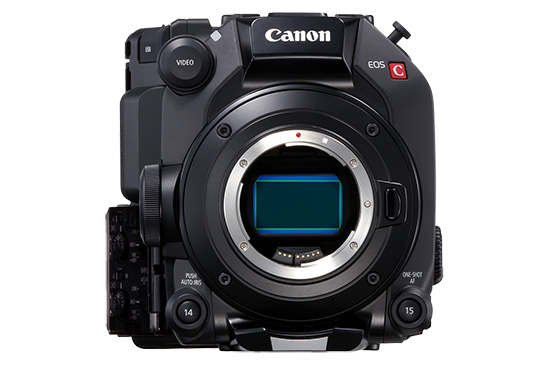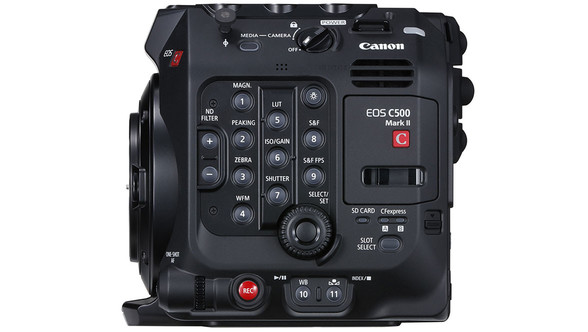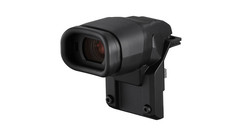The original C500 was sort of an "unchained" version of the C300, capable of outputting 4K video, but to take advantage of the features it had beyond the C300 required a bit of extra equipment and inconvenience which I feel limited its applications. At the time, 1080p and 2K were the standard and because of that, many operators moved into the EOS lineup with a C300, as it seemed like the better all-around choice.

Now that 4K capture has become the word (and for some distribution services, the rule), the C300 Mk II has stepped in to bring that resolution to the form-factor of tiny run-and-gun cameras. With Canon’s own C700 filling in the role of a larger-scale, production-ready camera, where then does the C500 Mk II fit in? After spending a short time with it, I think the C500 Mk II could be a worthy inheritor of the C300’s Swiss army knife reputation. If you’ve been using a C300 Mk II for a while, then the C500 Mk II is instantly familiar. A few noteworthy ergonomic improvements reveal themselves quickly, such as the slight shifting of the handgrip forward, and changing of its attachment method to a standardized rosette. Also new, but at the same time familiar, is the ability to add the rear-mounted EVF-V50 to accommodate shooting like an oversized still photo camera, and the EU-V2 expansion unit to enhance audio functionality as well as better balance the camera for shoulder-mounted shooting. I’ve used both versions of the C300 with the rear EVF that way many times, so having the option for the projects that need it is nice. That said, shouldering the C500 Mk II with the EVF-V70 from the C700 and the V2 expansion unit is the most balanced I’ve felt yet coming out of a Canon camera in this body shape.
Arguably the biggest draw for a given camera system is the look of the images coming out of it. Canon has established a reputation for consistency in their specific look. Though the time I’ve spent with the C500 Mk II has been short, and with early production samples, it matches well with the established Cinema EOS look. Again, at the time of writing, it’s a bit too early to be doing a side-by-side with a C300 Mk II, but from my early looks I wouldn’t expect any negative surprises if you are trying to match footage between the two. Note that there are some important differences with the sensor in the C500 Mk II. Remember that it is derived from the C700 FF, as opposed to being a scaled up version of the C300’s sensor. Obviously, full-frame format size is very significant to the look, and how the camera will respond to light, but codecs also play a role. The C500 Mk II can shoot to Canon's Cinema Raw Light, the RAW format introduced on the C200. Overall, I would expect matching footage between a C500 Mk II and C300 Mk II in the edit to be fairly simple, given appropriately matching camera settings. The C500 Mk II sensor can also just be cropped to match the S35 field of view of the C300, making it possible to use the same set of lenses across both to create a tight match.

What I think led so many productions to choose the C300 and the C300 Mk II over the years has been the versatility they provide, especially in a small crew environment. To me, the C500 Mk II represents the next step in that direction from Canon. It has more refined modularity and an established ecosystem of first-party accessories to pull from. It has a familiar look to the image that will cut well with older C300 Mk II footage, or work as one camera in a multi-camera setup involving one or more C300 Mk IIs. I think most importantly, it’s the critical middle point for Canon’s EOS lineup. It unifies the small body cameras by offering the Cinema Raw Light and XF-AVC codecs in one body, while also offering the option of the bigger field of view of full frame. Its 5.9K sensor also mimics the original C300’s “4K for a better 2K” mentality for users aiming for a 4K finish.
As a long-time user of the C300 cameras, if it weren’t for the differentiating sensor borrowed from the C700 FF flagship camera, I’d say that the C500 Mk II fits seamlessly in with the C300s, and from my perspective, that’s a very good thing.



















AbelCine encourages comments on our blog posts, as long as they are relevant and respectful in tone. To further professional dialog, we strongly encourage the use of real names. We reserve the right to remove any comments that violate our comment policy.
AbelCine publishes this blog as a free educational resource, and anyone may read the discussions posted here. However, if you want to join the conversation, please log in or register on our site.
We use Disqus to manage comments on this blog. If you already have a Disqus account registered under the same email as your AbelCine account, you will automatically be logged in when you sign in to our site. If not, please create a free account with Disqus using the same email as your AbelCine account.